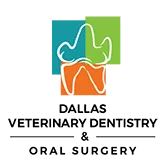Cat & Dog Dental Care Guidelines
The American Animal Hospital Association’s Dental Care Guidelines Task Force, a group of board-certified veterinary dentists, developed these cat & dog dental care guidelines to ensure that veterinarians practice the highest standard of veterinary dentistry at all times. The veterinary dental specialists at Dallas Veterinary Dentistry & Oral Surgery use these guidelines as a minimum and in most cases work to far exceed this level. Their advanced training and the technology our hospitals offer make it possible for us to set a much higher standard.
- Perform a full oral exam.
- Take X-rays of the entire mouth using digital radiographic systems. Take oral survey films during the initial exam and periodically thereafter. Take specific or localized radiographs when an oral problem is discovered. X-rays are necessary for accurate evaluation and diagnosis. Intraoral radiographs reveal clinically important issues in 27.8% of dogs and 41.7% of cats when no unusual findings are noted in the initial exam. In patients with abnormal findings, X-rays revealed additional problems in 50% of dogs and 53.9% of cats.
- Scale the teeth using a hand scaler or powered device.
- Polish the teeth using a low-speed handpiece with prophy paste that is measured and loaded on a prophy cup for each patient to avoid cross-contamination.
- Perform irrigation below the gum line to remove debris and polishing paste and to inspect the crown and areas under the gums.
- Check for abnormal periodontal pocket depths using a periodontal probe. The depth that is considered abnormal varies among teeth and with the size of the dog or cat.
- Perform periodontal therapy as needed following X-rays and probing.
- Provide antibiotics when indicated, either parenterally or locally, during the procedure.
- Perform periodontal surgery to remove deep debris, eliminate pockets, and/or extract teeth.
- Biopsy all abnormal masses and submit samples for lab review.
- Take postoperative X-rays to evaluate the treatment applied.
- Recommend that a client's pet be referred to a specialist when the practitioner does not have the skills, knowledge, equipment, or facilities to perform a given procedure or treatment.
- Maintain body temperature and continue intravenous fluid support as needed.
- Continuously monitor and record vital signs until the patient is awake.
- Continue pain management while the patient is in the hospital and upon discharge.
- At time of discharge, discuss operative procedures.
- Discuss postoperative home care, including medications.
- Discuss any change in diet that might be necessary, such as a change to soft or premoistened food or to a prescription diet.
- Provide individualized oral and written instructions at the time of discharge.
- Establish an appointment for a follow-up examination and further discussion.
- Call the client the day after the procedure to inquire about their pet’s condition.
- Discuss the client’s ability to implement the medication and home care plan.
- Answer any questions and address the client’s concerns.
- Set frequency of follow-up visits based on disease severity
- At a minimum, annual visits if under 6 years of age with a healthy mouth.
- Visits every 6 months if 6 years or older with a healthy mouth.
- Visits every 6 months anytime gingivitis is present.
- Visits every 3 to 6 months if periodontal disease is present.
- Advanced periodontal disease requires monthly examinations until the disease is controlled.
- Reemphasize home care instructions and recommendations at each follow-up examination and during phone communication.
- During the subsequent examination, evaluate client compliance, revise the treatment plan as needed, and redefine the prognosis.
Source: Journal of the American Animal Hospital Association, September/October 2005, Volume 41
- Specialist presents and discusses digital intraoral radiographs on the computer in an exam room upon discharge with each client.
- Specialist presents and discusses numerous digital photographs of her oral findings on the computer in an exam room upon discharge with each client.
- We can provide copies of printed photographs for the client to take home and which can also be emailed upon request.



